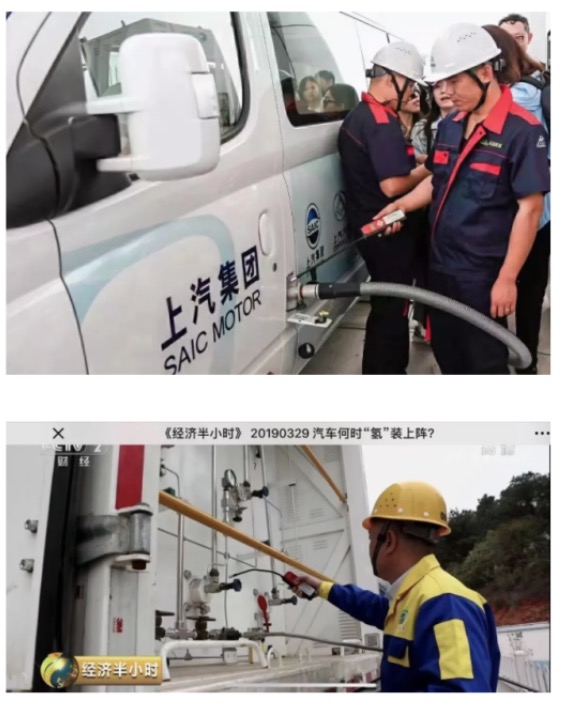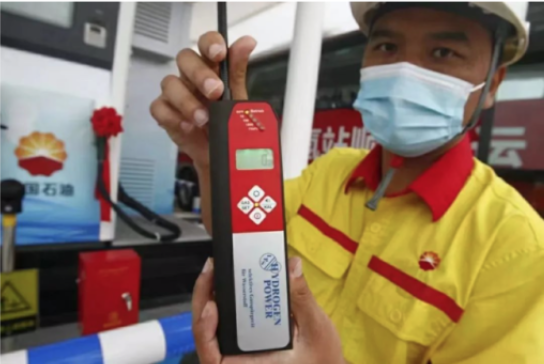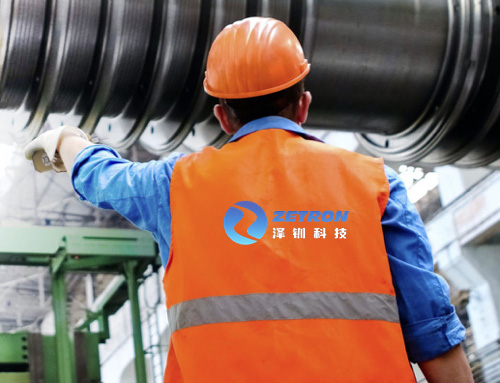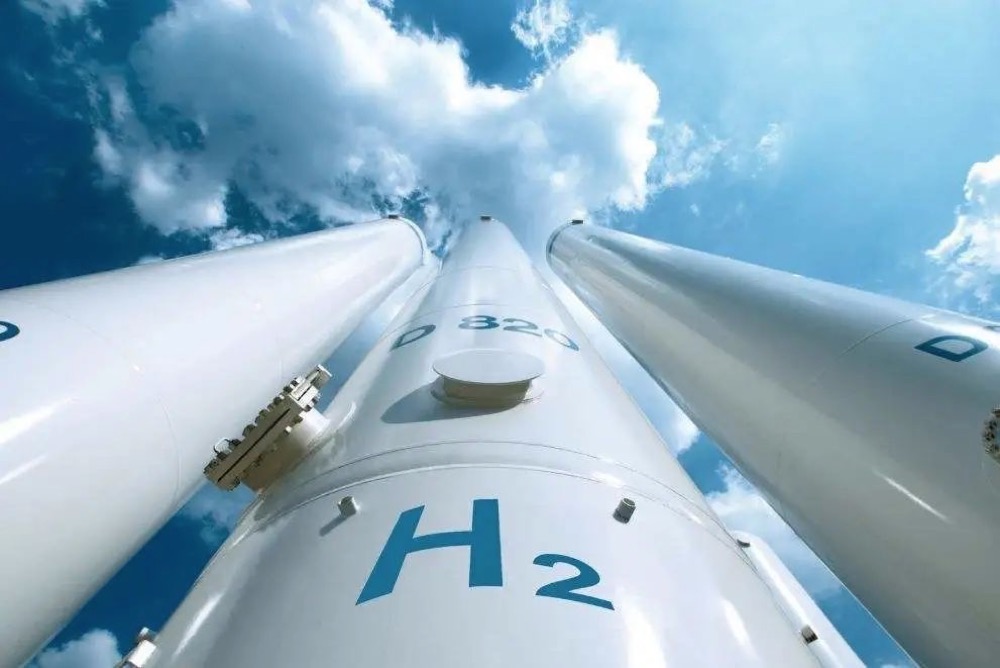Carbon emissions are closely linked to economic development, which requires the consumption of energy. However, with carbon dioxide emissions from all countries, greenhouse gases have soared and the resulting climate change has become a global problem for mankind, posing a threat to life systems. Against this backdrop, countries around the world are reducing greenhouse gas emissions in the form of a global compact. At the 75th General Debate of the United Nations General Assembly, China made clear its intention to adopt stronger policies and measures, which led to the introduction of carbon peaking and carbon neutral targets.
 "carbon peak" is our country's commitment to stop the growth of carbon dioxide emissions by 2030, and then slowly reduce them after reaching the peak; and by 2060, the carbon dioxide emissions will be completely offset by various means such as tree planting and energy saving, which is "carbon neutral". This is called "carbon neutral".
Green hydrogen is hydrogen produced by electrolysis of water from renewable energy sources, and is known as "green hydrogen" because it has almost zero carbon emissions from production to consumption. Hydrogen can be produced by electrolysis from abundant renewable energy sources and transported to energy consumption centres using storage and transport technologies.
At present, the raw material for hydrogen production is still mainly fossil fuel, which has high cost and carbon emission problems. In order to guide the green and healthy development of the hydrogen energy industry, many places have combined the construction of multi-energy complementary demonstration bases to carry out demonstration projects of hydrogen production from renewable energy sources, which not only improve the consumption capacity of new energy sources such as wind and light and reflect the demonstration effect of comprehensive energy projects, but also enrich the sources of hydrogen energy.
Current situation of the development of foreign hydrogen energy industry
At present, many countries around the world have incorporated hydrogen energy into their national energy development strategies and have formulated strategic plans for the development of the hydrogen energy industry from the national level.
The first country to adopt hydrogen energy and fuel cells as an energy strategy is the United States, with more than 30,000 hydrogen fuel cell forklifts and 8,413 passenger cars as of June 2020. The US has a high utilisation rate of hydrogen refuelling stations, with an average of around 130 vehicles per station, and plans to build 200 stations by 2025 and 1,000 by 2030.
In April 2020, the Netherlands released its national hydrogen energy strategy, which plans to build 50 hydrogen refuelling stations, launch 15,000 fuel cell vehicles and 3,000 heavy-duty vehicles by 2025, and reach 300,000 fuel cell vehicles by 2030. In June 2020, France announced its action plan for green hydrogen-fuelled aircraft by 2035, and in July 2020, the EU published the EU Hydrogen Energy Strategy and the EU Energy Systems Integration Strategy, aiming to achieve carbon neutrality by 2050.
In December 2017, Japan released its Basic Hydrogen Energy Strategy, which specifies targets for hydrogen supply capacity, power generation costs, and application areas by 2025 and 2030. By the end of 2019, there were 130 hydrogen refuelling stations in Japan, each serving about 30 vehicles, and more than 3,500 hydrogen fuel cell passenger vehicles in operation. 2019, South Korea released the "Roadmap for Hydrogen Economy Development", proposing to enter a hydrogen society by 2030. By the end of 2019, the installed capacity of fuel cell power generation in Korea was 408MW, accounting for about 40% of the global total.
The development status of foreign hydrogen energy industry
In March 2019, hydrogen energy was written into China's Government Work Report for the first time, and a number of supporting plans and policies have been issued to promote the continuous improvement of the hydrogen energy research and development, preparation, storage and transportation and application chain. in September 2020, four ministries and commissions jointly issued the "Guidance on Expanding Investment in Strategic Emerging Industries to Foster and Strengthen New Growth Points and Growth Poles" to speed up the development of new energy and the construction of hydrogen production and refuelling facilities.
According to incomplete statistics, as of December 31, 2020, there are 181 hydrogen refueling stations under construction and already built in China, of which 124 have been completed, among which 55 stations will be completed in 2020, and the distribution of completed hydrogen refueling stations is shown in Figure 1. There are 57 hydrogen refuelling stations under construction, mainly concentrated in Guangdong, Shandong and Hebei.
In 2022, the latest data from the National Energy Administration shows that China has made a new breakthrough in hydrogen refuelling and has built more than 250 hydrogen refuelling stations, accounting for about 40% of the global number and ranking first in the world in the number of hydrogen refuelling stations.
Hydrogen has a molecular weight of only 2 and is the lightest gas in nature. The standard density (0°C, 101.325 KPa) is 0.0899 Kg/m3 and the relative density (air, 0°C, 101.325 KP) is 0.07. Therefore, when hydrogen gas leaks, it can easily cause combustion and explosions. The flames produced by hydrogen during combustion are light blue and the flames are difficult to observe in sunlight, which makes it easier to cause casualties.
In the automotive sector, the promotion and application of hydrogen energy, its safety is the first concern. The use of hydrogen leak detection equipment is needed to eliminate hidden dangers and take precautions in advance so that more people will be inclined to use hydrogen energy and work together towards the trend of low carbon change.
"carbon peak" is our country's commitment to stop the growth of carbon dioxide emissions by 2030, and then slowly reduce them after reaching the peak; and by 2060, the carbon dioxide emissions will be completely offset by various means such as tree planting and energy saving, which is "carbon neutral". This is called "carbon neutral".
Green hydrogen is hydrogen produced by electrolysis of water from renewable energy sources, and is known as "green hydrogen" because it has almost zero carbon emissions from production to consumption. Hydrogen can be produced by electrolysis from abundant renewable energy sources and transported to energy consumption centres using storage and transport technologies.
At present, the raw material for hydrogen production is still mainly fossil fuel, which has high cost and carbon emission problems. In order to guide the green and healthy development of the hydrogen energy industry, many places have combined the construction of multi-energy complementary demonstration bases to carry out demonstration projects of hydrogen production from renewable energy sources, which not only improve the consumption capacity of new energy sources such as wind and light and reflect the demonstration effect of comprehensive energy projects, but also enrich the sources of hydrogen energy.
Current situation of the development of foreign hydrogen energy industry
At present, many countries around the world have incorporated hydrogen energy into their national energy development strategies and have formulated strategic plans for the development of the hydrogen energy industry from the national level.
The first country to adopt hydrogen energy and fuel cells as an energy strategy is the United States, with more than 30,000 hydrogen fuel cell forklifts and 8,413 passenger cars as of June 2020. The US has a high utilisation rate of hydrogen refuelling stations, with an average of around 130 vehicles per station, and plans to build 200 stations by 2025 and 1,000 by 2030.
In April 2020, the Netherlands released its national hydrogen energy strategy, which plans to build 50 hydrogen refuelling stations, launch 15,000 fuel cell vehicles and 3,000 heavy-duty vehicles by 2025, and reach 300,000 fuel cell vehicles by 2030. In June 2020, France announced its action plan for green hydrogen-fuelled aircraft by 2035, and in July 2020, the EU published the EU Hydrogen Energy Strategy and the EU Energy Systems Integration Strategy, aiming to achieve carbon neutrality by 2050.
In December 2017, Japan released its Basic Hydrogen Energy Strategy, which specifies targets for hydrogen supply capacity, power generation costs, and application areas by 2025 and 2030. By the end of 2019, there were 130 hydrogen refuelling stations in Japan, each serving about 30 vehicles, and more than 3,500 hydrogen fuel cell passenger vehicles in operation. 2019, South Korea released the "Roadmap for Hydrogen Economy Development", proposing to enter a hydrogen society by 2030. By the end of 2019, the installed capacity of fuel cell power generation in Korea was 408MW, accounting for about 40% of the global total.
The development status of foreign hydrogen energy industry
In March 2019, hydrogen energy was written into China's Government Work Report for the first time, and a number of supporting plans and policies have been issued to promote the continuous improvement of the hydrogen energy research and development, preparation, storage and transportation and application chain. in September 2020, four ministries and commissions jointly issued the "Guidance on Expanding Investment in Strategic Emerging Industries to Foster and Strengthen New Growth Points and Growth Poles" to speed up the development of new energy and the construction of hydrogen production and refuelling facilities.
According to incomplete statistics, as of December 31, 2020, there are 181 hydrogen refueling stations under construction and already built in China, of which 124 have been completed, among which 55 stations will be completed in 2020, and the distribution of completed hydrogen refueling stations is shown in Figure 1. There are 57 hydrogen refuelling stations under construction, mainly concentrated in Guangdong, Shandong and Hebei.
In 2022, the latest data from the National Energy Administration shows that China has made a new breakthrough in hydrogen refuelling and has built more than 250 hydrogen refuelling stations, accounting for about 40% of the global number and ranking first in the world in the number of hydrogen refuelling stations.
Hydrogen has a molecular weight of only 2 and is the lightest gas in nature. The standard density (0°C, 101.325 KPa) is 0.0899 Kg/m3 and the relative density (air, 0°C, 101.325 KP) is 0.07. Therefore, when hydrogen gas leaks, it can easily cause combustion and explosions. The flames produced by hydrogen during combustion are light blue and the flames are difficult to observe in sunlight, which makes it easier to cause casualties.
In the automotive sector, the promotion and application of hydrogen energy, its safety is the first concern. The use of hydrogen leak detection equipment is needed to eliminate hidden dangers and take precautions in advance so that more people will be inclined to use hydrogen energy and work together towards the trend of low carbon change.
The German UST Hydrogen Power hydrogen detector is now in use at several hydrogen refuelling stations in China. It has a rapid detection response (<1 second), is suitable for hydrogen leak detection and can operate continuously for up to 10 hours, and is suitable for use in hydrogen preparation, transport, hydrogen refuelling and in hydrogen energy vehicles.


On the road to building a new energy source of green hydrogen, Zetron is also willing to take the initiative to participate in it!









